June 9th, 2009 by KevinMD in Better Health Network
No Comments »

The military is learning from the dead.
In the past five years, every soldier who was killed in Iraq and Afghanistan has been given a CT scan. Why? In the hopes of creating a database of war injuries, which can be used to better equip and treat future soldiers.
The effort has already paid dividends. While examining the data, it was noticed that chest tubes used to treat pneumothoraces in the field were too short. The standard tubing would have been appropriate for 50 percent of soldiers, versus longer tubing that would fit 99 percent.
Also, it was because of these “autopsy scans” where it was noticed that many of the troops died from wounds in the upper torso, which could have been prevented with the appropriate body armor. On the basis of these findings, the military rushed more armor plates to Iraq.
It’s an interesting piece, and goes on to discuss the sensitive implications of the findings to family members:
The possibility that a relative burned to death is a particular source of anguish for families, and one area in which CT can outperform an autopsy. In a body damaged by flames, CT can help pathologists figure out whether the burns occurred before or after death. The scans can also tell whether a person found in water died from drowning.
It’s truly remarkable to see how much that can be learned after death.
*This blog post was originally published at KevinMD.com*
June 5th, 2009 by KevinMD in Better Health Network
No Comments »

A bizarrely morbid slide show of radiology images showing various patients impaled by foreign objects.
If you need more reasons to be wary of nail guns, fishing spears, keys, or knives, look no further.
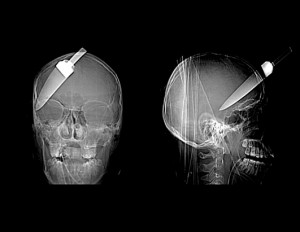
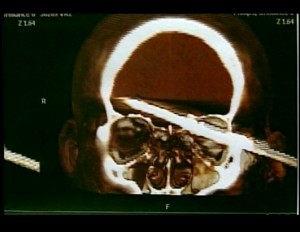
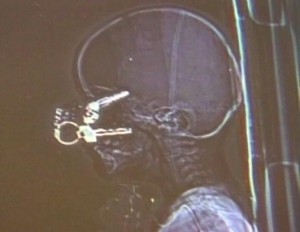
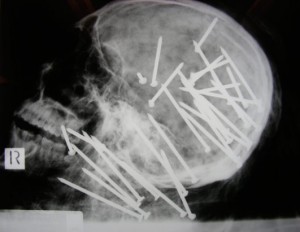
*This blog post was originally published at KevinMD.com*
June 3rd, 2009 by scanman in Better Health Network
No Comments »

via other things amanzi: ct scans.

i’m usually quite good at reading ct scans, but this one just left me with one big question mark.
…and like most questions from surgeons to radiologists, this one is half full of it 
*This blog post was originally published at scan man's notes*
May 18th, 2009 by Dr. Val Jones in True Stories
12 Comments »
Can anyone tell me what this is? (I’ll post the answer in the comments section).
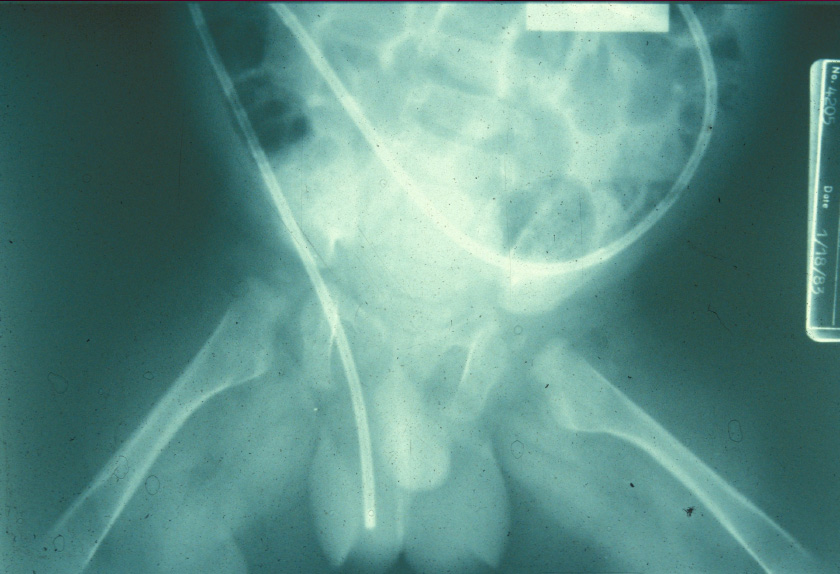
Film Credit: Dr. Michael Armento
March 30th, 2009 by KevinMD in Better Health Network
2 Comments »
More hospitals are resorting to so-called “dayhawk” radiology services to read their x-rays.
It’s modeled after the “nighthawk” model, where radiologists (via Shadowfax), in some cases as far away as India, remotely read films in the middle of the night.
Now, the phenomenon is happening during business hours as well, which according to radiologist Giles W. L. Boland, means that “some radiologists can no longer assume long-term job security because their core value proposition can now be outsourced.”
This trend was entirely foreseeable. Cash-strapped hospitals are finding it cheaper to outsource x-ray readings, and furthermore, it seems that both nighthawks and dayhawks provide better service and more timely interpretations. This adds up to a declining need for an in-house radiology staff.
That’s bad news for some. Radiology departments at smaller hospitals may close, and eventually general radiologist salaries will come under pressure.
The answer? Like everything else in medicine, radiology sub-specialists will increasingly be in demand. Expect procedure-based, interventional radiology to grow, since what they do cannot be outsourced. Health care costs will correspondingly rise.
So, like primary care, don’t be surprised if the days of general radiology are numbered.
**This post was originally published at Dr. Kevin Pho’s blog, KevinMD.**


















